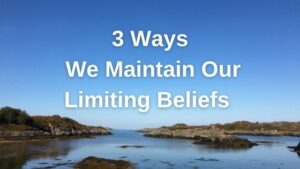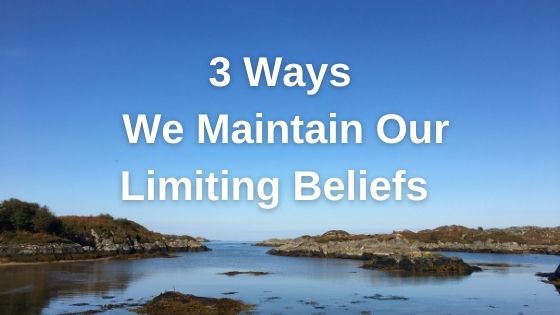“Life has no limitations, except the ones you make.”
Les Brown
To keep us safe
Throughout our lives we construct helpful beliefs and limiting beliefs. There are also 3 ways we maintain our limiting beliefs. All of this is designed to keep us safe and to help us survive.
Some of these beliefs are super helpful and really do ensure our safety. Take heat or fire for example. Somewhere along our life’s journey we discover that some things are hot, so hot in fact, they can burn you and it hurts.
How we learn
We may learn through the repeated explanations of our caregivers. “Don’t touch that, it’s hot!”
Or perhaps through experimentation. Our hand over a candle, holding a match too long, that sort of thing and then we know and believe it for sure. Fire is hot, it can burn you and it does hurt.
We may however learn that fire is dangerous and become terrified of it. If we were burned in an accident or involved in a house or forest fire our view of fire and its potential could be very different.
Limiting beliefs
A belief hewn in adversity can become limiting later in life. For example an early house fire experience could leave us terrified of being left alone, or scared to go to sleep, or even up stairs. It could make us paranoid about turning off switches till it turns into an obsession.
Because limiting beliefs are often formed in terrifying or traumatic circumstances we will cling onto them come hell or high water. They can feel like our life depends upon them.
Foundations
They become the ground upon which we construct our life, a world view designed to maintain safety. We do not let them go easily. We really really do not want to face such things again so we develop strategies to prevent that “bad” thing happening again in the future.
Our beliefs are about future safety.
3 ways we maintain our limiting beliefs
When our beliefs are challenged it can be unsettling so we humans have developed strategies to deal with that. We delete, distort, or generalise; all are approaches deigned to maintain our psychological equilibrium. Unfortunately clinging on to our limiting beliefs does little to create true stability.

DELETE
We may simply dismiss, deny or edit out information which challenges our belief.
- Oh they were just pretending to…
- It was a one off.
- I would never do that.
- Yes but…
DISTORT
We alter, warp, twist or pervert what is said or happening so our belief holds true.
- You’ve misunderstood what I said…
- They didn’t mean that.
- Everyone is out to get me.
- They will always let you down.
GENERALISE
We make broad conclusions about ourselves, others and the world demonstrating why our belief is absolute.
- Money always causes problems.
- You can’t trust anyone.
- Bad things always happen to me.
- She always/never…
Why change?
Is this a problem? No, not really if you want to stay the same, if you are happy, healthy and living the life you always dreamed of. Why change?
If however you know that you are living a life contained and confined by limiting beliefs, where fears keep you stuck in unsatisfying repeat patterns. Dive in.
Awareness is the first step
Choose a belief, any belief. Write it down, then ask yourself. How do I delete, distort and generalise in order to keep this belief in place?
Awareness is the first step towards change. Dare to enter a new state of consciousness about who you are, how the world is and what possibilities it may hold for you.
“You can’t escape from a prison until you recognize you are in one. People who have chosen to live within the limits of their old beliefs continue to have the same experiences. It takes effort and commitment to break old patterns”
Bob Proctor




[…] my blog 3 Ways we Maintain our Limiting Beliefs I explain the destructive patterns our Government is currently […]
[…] my work as a therapist and health coach. This human scale investigation uncovers layers of limiting beliefs and behaviour patterns, conditioning, traumas and other emotional difficulties experienced and […]